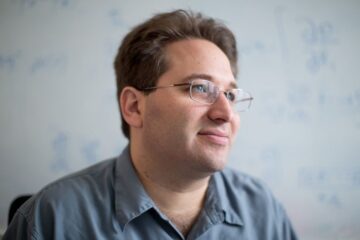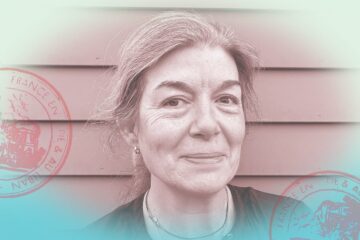Evelyn Medawar in Translational Psychiatry:
 Western societies notice an increasing interest in plant-based eating patterns such as vegetarian and vegan, yet potential effects on the body and brain are a matter of debate. Therefore, we systematically reviewed existing human interventional studies on putative effects of a plant-based diet on the metabolism and cognition, and what is known about the underlying mechanisms. Using the search terms “plant-based OR vegan OR vegetarian AND diet AND intervention” in PubMed filtered for clinical trials in humans retrieved 205 studies out of which 27, plus an additional search extending the selection to another five studies, were eligible for inclusion based on three independent ratings.
Western societies notice an increasing interest in plant-based eating patterns such as vegetarian and vegan, yet potential effects on the body and brain are a matter of debate. Therefore, we systematically reviewed existing human interventional studies on putative effects of a plant-based diet on the metabolism and cognition, and what is known about the underlying mechanisms. Using the search terms “plant-based OR vegan OR vegetarian AND diet AND intervention” in PubMed filtered for clinical trials in humans retrieved 205 studies out of which 27, plus an additional search extending the selection to another five studies, were eligible for inclusion based on three independent ratings.
We found robust evidence for short- to moderate-term beneficial effects of plant-based diets versus conventional diets (duration ≤ 24 months) on weight status, energy metabolism and systemic inflammation in healthy participants, obese and type-2 diabetes patients.
More here.

 Cardiovascular diseases (CVDs) and cancer currently represent the leading causes of death and disability worldwide. Studies performed on large cohorts worldwide have identified several modifiable and non-modifiable risk factors. Among them, robust evidence supports
Cardiovascular diseases (CVDs) and cancer currently represent the leading causes of death and disability worldwide. Studies performed on large cohorts worldwide have identified several modifiable and non-modifiable risk factors. Among them, robust evidence supports  A few years ago, when my daughter was a freshman at Columbia University, one of only a few from Arkansas, I had the audacity to propose to then-president Lee Bollinger that the university add a hands-on component to its core curriculum. The core curriculum is intended to build a common framework of understanding as a baseline for academic life and what proceeds from it. Even though my academic credentials might not have caught Bollinger’s attention, I believed that I had something to offer as a craftsman and woodworker, and a father.
A few years ago, when my daughter was a freshman at Columbia University, one of only a few from Arkansas, I had the audacity to propose to then-president Lee Bollinger that the university add a hands-on component to its core curriculum. The core curriculum is intended to build a common framework of understanding as a baseline for academic life and what proceeds from it. Even though my academic credentials might not have caught Bollinger’s attention, I believed that I had something to offer as a craftsman and woodworker, and a father. Dr. Scott Aaronson is the David J. Bruton Jr. Centennial Professor of Computer Science at UT Austin. He is known for his work as a computer scientist and research into complexity theory and quantum computing, and more recently for his work at OpenAI, the creators of ChatGPT, on AI alignment. I sat down with Dr. Aaronson to talk about the nature of quantum computing, why we should care, and his thoughts on the recent developments in artificial intelligence.
Dr. Scott Aaronson is the David J. Bruton Jr. Centennial Professor of Computer Science at UT Austin. He is known for his work as a computer scientist and research into complexity theory and quantum computing, and more recently for his work at OpenAI, the creators of ChatGPT, on AI alignment. I sat down with Dr. Aaronson to talk about the nature of quantum computing, why we should care, and his thoughts on the recent developments in artificial intelligence. Bérubé’s new book, The Ex-Human, is about science fiction. Bérubé offers thoughtful close readings of a number of classic science fiction texts: Ursula Le Guin’s The Left Hand of Darkness, Cixin Liu’s The Three-Body Problem, Margaret Atwood’s Oryx and Crake, Philip K. Dick’s Do Androids Dream of Electric Sleep? (with some reference to its film adaptation as Blade Runner), Arthur C. Clarke’s 2001 (with some reference to its better-known film adaptation by Stanley Kubrick), and Octavia Butler’s Parable series and Lilith’s Brood series.
Bérubé’s new book, The Ex-Human, is about science fiction. Bérubé offers thoughtful close readings of a number of classic science fiction texts: Ursula Le Guin’s The Left Hand of Darkness, Cixin Liu’s The Three-Body Problem, Margaret Atwood’s Oryx and Crake, Philip K. Dick’s Do Androids Dream of Electric Sleep? (with some reference to its film adaptation as Blade Runner), Arthur C. Clarke’s 2001 (with some reference to its better-known film adaptation by Stanley Kubrick), and Octavia Butler’s Parable series and Lilith’s Brood series. “I’m a writer; I tell stories,” reads the first line of Claire Messud’s
“I’m a writer; I tell stories,” reads the first line of Claire Messud’s  Older people who aren’t picky eaters appear to have better brain health than those who prefer more limited diets, according to a large study of British adults. The
Older people who aren’t picky eaters appear to have better brain health than those who prefer more limited diets, according to a large study of British adults. The  I’m stressed and running late, because what do you wear for the rest of eternity?
I’m stressed and running late, because what do you wear for the rest of eternity? Proteins are biological workhorses. They build our bodies and orchestrate the molecular processes in cells that keep them healthy. They also present a wealth of targets for new medications. From everyday pain relievers to sophisticated cancer immunotherapies, most current drugs interact with a protein. Deciphering protein architectures could lead to new treatments. That was the promise of AlphaFold 2, an AI model from Google DeepMind that predicted how proteins gain their distinctive shapes based on the sequences of their constituent molecules alone. Released in 2020, the tool was a breakthrough half a decade in the making. But proteins don’t work alone. They inhabit an entire cellular universe and often collaborate with other molecular inhabitants like, for example, DNA, the body’s genetic blueprint.
Proteins are biological workhorses. They build our bodies and orchestrate the molecular processes in cells that keep them healthy. They also present a wealth of targets for new medications. From everyday pain relievers to sophisticated cancer immunotherapies, most current drugs interact with a protein. Deciphering protein architectures could lead to new treatments. That was the promise of AlphaFold 2, an AI model from Google DeepMind that predicted how proteins gain their distinctive shapes based on the sequences of their constituent molecules alone. Released in 2020, the tool was a breakthrough half a decade in the making. But proteins don’t work alone. They inhabit an entire cellular universe and often collaborate with other molecular inhabitants like, for example, DNA, the body’s genetic blueprint. As radical as they might seem, calls for limits on wealth are as old as civilization itself. The Hebrew Bible and Torah recognized years during which debts should be cancelled, slaves set free and property redistributed from rich to poor. In classical Greece, Aristotle praised cities that kept wealth inequality in check to enhance political stability. And in 1942, then-US president Franklin D. Roosevelt argued that annual incomes should be capped at the current equivalent of US$480,000.
As radical as they might seem, calls for limits on wealth are as old as civilization itself. The Hebrew Bible and Torah recognized years during which debts should be cancelled, slaves set free and property redistributed from rich to poor. In classical Greece, Aristotle praised cities that kept wealth inequality in check to enhance political stability. And in 1942, then-US president Franklin D. Roosevelt argued that annual incomes should be capped at the current equivalent of US$480,000. Mr. Simons equipped his colleagues with advanced computers to process torrents of data filtered through mathematical models, and turned the four investment funds in his new firm,
Mr. Simons equipped his colleagues with advanced computers to process torrents of data filtered through mathematical models, and turned the four investment funds in his new firm, 
 Editor-in-chief Sarahanne Field describes herself and her team at the Journal of Trial & Error as wanting to highlight the “ugly side of science — the parts of the process that have gone wrong”.
Editor-in-chief Sarahanne Field describes herself and her team at the Journal of Trial & Error as wanting to highlight the “ugly side of science — the parts of the process that have gone wrong”. Richard Pithouse: Mandela was released from prison on February 11, 1990, suddenly opening up the field of political possibility after a long and exhausting stalemate between the progressive forces, which were largely organized in two groups: the United Democratic Front (UDF) and the trade unions, and the apartheid state. What did Mandela’s release mean to you?
Richard Pithouse: Mandela was released from prison on February 11, 1990, suddenly opening up the field of political possibility after a long and exhausting stalemate between the progressive forces, which were largely organized in two groups: the United Democratic Front (UDF) and the trade unions, and the apartheid state. What did Mandela’s release mean to you?